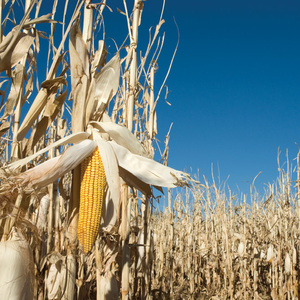USDA maintains 2021-'22 forecast for corn use in ethanol

September 13, 2021
BY Erin Krueger
The USDA maintained its forecast for 2021-’22 corn use in ethanol in its latest World Agricultural Demand and Supply Estimates report, released Sept. 10. Expected 2020-’21 corn use in ethanol, however, was revised down.
According to USDA, projected beginning stocks for 2021-’22 are 70 bushels higher based on lower use forecast for 2020-’21, with reductions in corn used for ethanol and exports. The USDA currently estimates 2020-’21 corn use for ethanol at 5.035 billion bushels, down from an estimated 5.075 billion bushels reported in the August WASDE.
Advertisement
Advertisement
Corn production for 2021-’22 is forecast at 15 billion bushels, up 246 million from last month on increases to harvested area and yield. The national average yield is forecast at 176.3 bushels per acre, up 1.7 bushels, while harvested areas for grain is forecast at 85.1 million acres, up 600,000.
Total U.S. corn use for 2021-’22 is up 150 million bushels to 14.8 billion. Feed and residual use is raised 75 million bushels based mostly on a larger crop and lower expected prices. An estimated 5.2 billion bushels of corn is expected to go to ethanol production in 2021-’22, a forecast maintained from the August WASDE. Exports for 2021-’22 are up 75 million bushels to 2.5 billion. With supply rising more than use, ending stocks are increased 166 million bushels to 1.4 billion. The season-average corn price received by producers is lowered 30 cents to $5.45 per bushel.
Foreign corn production for 2021-’22 is forecast higher when compared to last month, with increases for China and Argentina more than offsetting reductions for Russia and Serbia. China corn production is raised with a boost in yield prospects, based mostly on near to above normal rainfall in the key Northeast provinces of Heilongjiang, Jilin, Inner Mongolia and Liaoning. Argentina corn production is raised based on expectations of higher area.
Advertisement
Advertisement
For China, corn feed and residual use for 2020-’21 is lowered based on indicated soybean meal equivalent protein consumption and expanded use of alternative energy feedstuffs, such as barley and sorghum. For 2021-’22, feed and residual use is raised based mostly on a larger crop and lower expected internal market prices. Food, seed and industrial use is lowered for 2020-‘21 and 2021-‘22 based on a reduction in the expected amount of corn used for ethanol and corn product exports. Despite a forecast increase in corn production, imports are unchanged for 2021-‘22 as the gap between China’s domestic and international corn prices is expected to persist, particularly in the feed deficit South.
Globally, corn imports are raised for Canada and Mexico, but are reduced for Vietnam. For 2020-‘21, for the local marketing year beginning March 2021 corn exports are lowered for Brazil but raised for Argentina. Foreign corn ending stocks for 2021-‘22 are raised 8.8 million tons to 261.9 million, mostly reflecting an increase for China.
Related Stories
U.S. fuel ethanol capacity fell slightly in April, while biodiesel and renewable diesel capacity held steady, according to data released by the U.S. EIA on June 30. Feedstock consumption was down when compared to the previous month.
The U.S. EPA on July 8 hosted virtual public hearing to gather input on the agency’s recently released proposed rule to set 2026 and 2027 RFS RVOs. Members of the biofuel industry were among those to offer testimony during the event.
The USDA’s Risk Management Agency is implementing multiple changes to the Camelina pilot insurance program for the 2026 and succeeding crop years. The changes will expand coverage options and provide greater flexibility for producers.
The USDA’s National Agricultural Statistics Service on June 30 released its annual Acreage report, estimating that 83.4 million acres of soybeans have been planted in the U.S. this year, down 4% when compared to 2024.
SAF Magazine and the Commercial Aviation Alternative Fuels Initiative announced the preliminary agenda for the North American SAF Conference and Expo, being held Sept. 22-24 at the Minneapolis Convention Center in Minneapolis, Minnesota.
Upcoming Events










